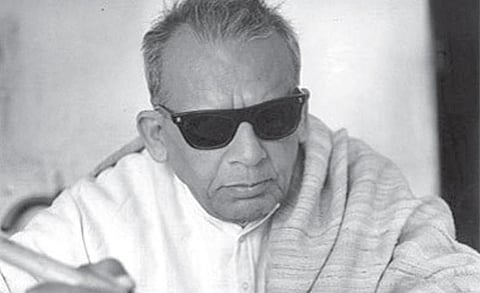

NEW DELHI: The National Gallery of Modern Art will celebrate the 119th birth anniversary of legendary artist Binod Bihari Mukherjee, a pioneer of Indian modern Art and a key figure of contextual Modernism.
Mukherjee, who had visual and ocular problems since birth, continued to concentrate on his art despite having myopia in one eye and blindness in the other. After a botched eye cataract surgery in 1956, he lost his vision completely, but he kept working on large mural paintings.
Aiming to bridge the gap between art and specially-abled people through art, the museum will celebrate his birth anniversary from February 7 to 12. This seven-day workshop will emphasize raising awareness of BB Mukherjee’s unique capacity for concentration. Mukherjee, who was born in West Bengal’s Behala on February 7, 1904, received Padma Vibhushan in 1974.
He was a professor at Santiniketan’s Visva Bharati University. His early education was received at Sanskrit Collegiate School. He was accepted into Visva-Bharati University’s Kala Bhavana, the art faculty, in 1919. He was Ramkinkar Baij’s friend and close associate. He studied under the Indian artist Nandalal Bose. He began working as a teaching faculty member at Kala Bhavan in 1925. During 1937 to 1938, he spent a few months in Japan with artists like Arai Kampo. Some of his works show a marked influence of traditional wash technique of China and Japan in 1948 he went to become Director of National Museum of Kathmandhu in Nepal.
Pioneer of Indian modern art Binod Bihari Mukherjee, who had visual and ocular problems since birth, continued to concentrate on his art despite having myopia in one eye and blindness in the other. After a botched eye cataract surgery in 1956, he lost his vision completely, but he kept working on large mural paintings.